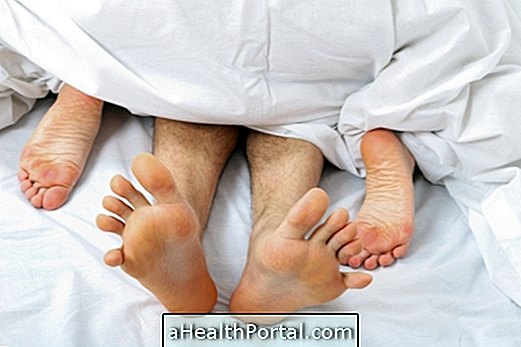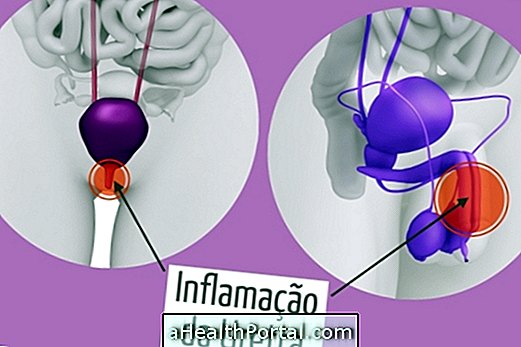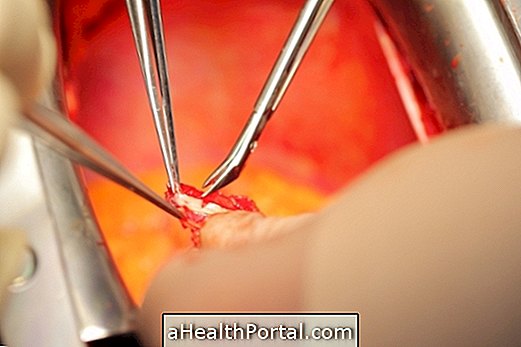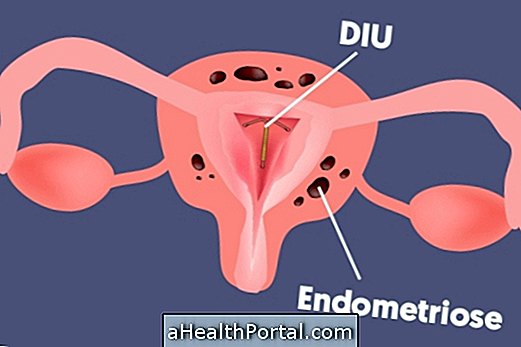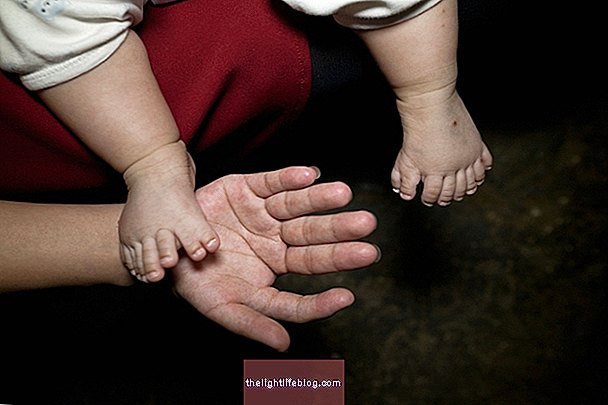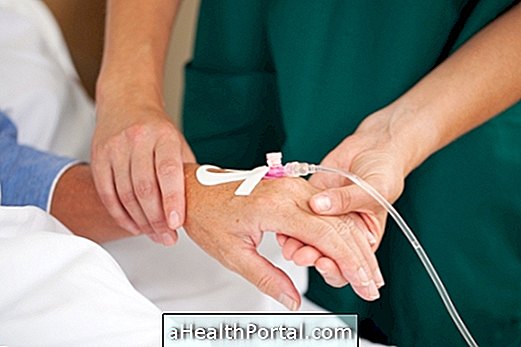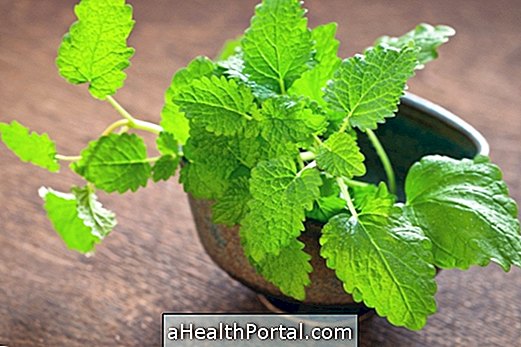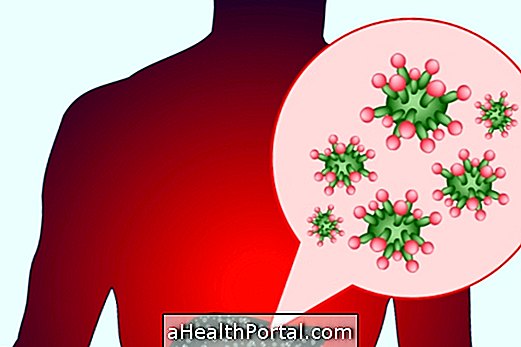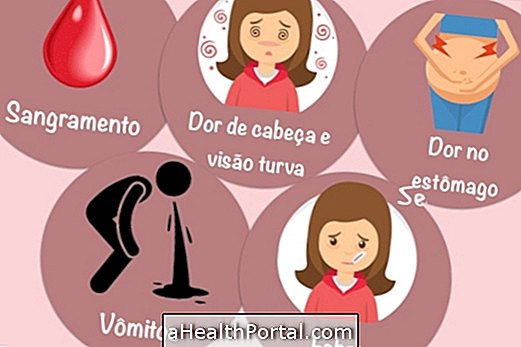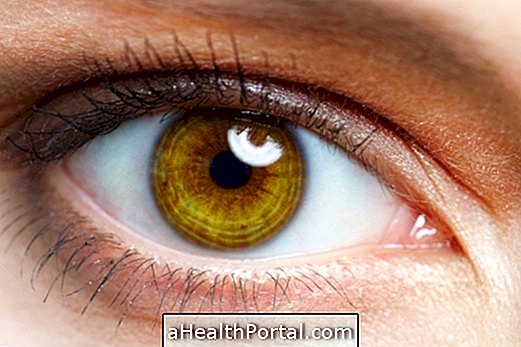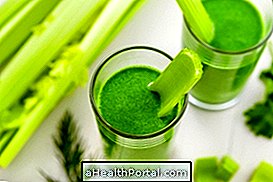Treatment for primary dysmenorrhoea can be done with pain medications, in addition to the contraceptive pill, but in case of secondary dysmenorrhea, surgery may even be needed.
In any case, there are natural, home-based and alternative strategies that help control pain and discomfort, making it easier for a woman to exercise, use a bag of warm water over her belly, and prefer or avoid certain foods.
The following are some possible ways to treat this intense menstrual cramp.
Remedies for dysmenorrhea

The remedies that the gynecologist can indicate to combat the intense menstrual cramps, after being diagnosed this change, can be:
- Analgesic remedies, such as paracetamol and non-steroidal anti-inflammatory drugs such as mefenamic acid, ketoprofen, piroxicam, ibuprofen, naproxen, which act by blocking the production of prostaglandins having an effect against pain and inflammation;
- Antispasmodic remedies, such as Atroveran or Buscopan, for example, to decrease menstrual cramps;
- Remedies that decrease menstrual flow, such as Meloxicam, Celecoxib, Rofecoxib
- Oral contraceptive pill .
Both analgesics, anti-inflammatories or antispasmodics should be taken a few hours before or soon in the onset of menstrual cramps, to have the expected effect. In the case of the pill, it must be taken according to the indications of the package insert, since they vary between 21 and 24 days, with a pause of 4 or 7 days between each carton.
When dysmenorrhea is secondary, and it happens because there is some disease in the pelvic region, the gynecologist may indicate other medications that are more indicated. In case of endomentriosis it may be necessary to have surgery to remove excess endometrial tissue outside the uterus, and in case of IUD use, this should be removed as soon as possible.
Physiotherapy for dysmenorrhea

Physical therapy may also be a good option to control the intense menstrual cramps caused by primary dysmenorrhea, with resources such as:
- Use of heat, which will stimulate blood irrigation, relax the muscles and relieve the impact of contractions of the uterus;
- Massotherapy in the abdomen and back, using kneading or friction techniques that soothes, improves circulation and relaxes the muscles;
- Pelvic exercises that lengthen muscles, promote relaxation and relieve pain;
- Transcutaneous Nerve Stimulation, the TENS, in which electrodes are placed in the lumbar and pelvic region, an electric current that does not cause pain and stimulates nerve endings, relieving pain and colic.
This type of treatment may be useful for slowing or even stopping the pain of primary dysmenorrhea and is also a good way of supplementing the treatment indicated by the doctor in case of secondary dysmenorrhea. To know the differences between these two types of disease, see: What is dysmenorrhea, and how to stop it.
Natural treatment for dysmenorrhea

Natural treatment can be done with home measures such as:
- Put a hot water bag on the belly;
- Rest, putting your belly down on a pillow to compress it;
- Decrease consumption of salt and sodium-rich foods, such as sausages and canned foods;
- Eat more dairy products, dark vegetables, soybeans, bananas, beets, oats, kale, zucchini, salmon or tuna;
- Avoid caffeinated beverages such as coffee, chocolate, black tea and soda, such as coke;
- Avoid alcoholic beverages.
A great home remedy for dysmenorrhea is to drink oregano tea by putting 2 teaspoons of oregano into 1 cup of boiling water, capping and letting it stand for 5 minutes, drinking it about 2 to 3 times a day.
Alternative treatment for dysmenorrhea

As an alternative treatment for relieving intense menstrual cramps one can resort to reflex massage, ayurvedic massage or shiatsu. But acupuncture, which consists of placing needles at key points in the body, it may also be possible to decrease menstrual pain and regulate the menstrual cycle, facilitating the woman's daily life.
These alternative treatment strategies can be performed at any stage of the menstrual cycle, but they also relieve pain during menstruation, but they are not always sufficient to replace the taking of the remedies indicated by the gynecologist.
Is it possible to get pregnant with dysmenorrhea?
Primary dysmenorrhea has no definite cause, and it does not interfere with pregnancy, and so the woman can conceive naturally if she has sex, but in case of secondary dysmenorrhea, there may be important pelvic alterations, and therefore it may be more difficult for the woman to get pregnant naturally. In any case, menstrual pain diminishes long after pregnancy, but because that happens is still not well defined.
